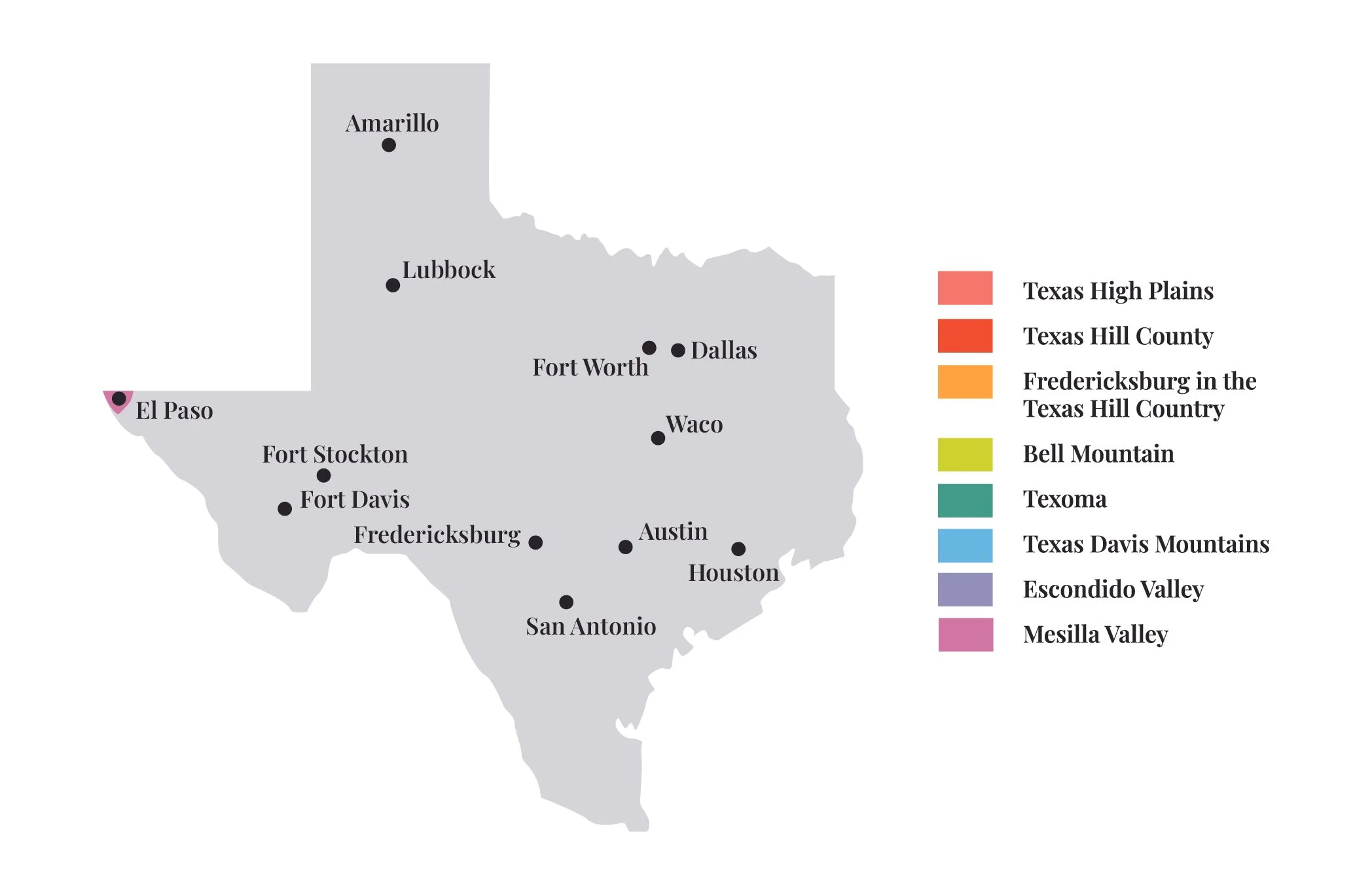Mesilla Valley AVA
Desert Oasis of the Rio Grande
Authorized in 1985, the Mesilla Valley American Viticultural Area (AVA) straddles the Rio Grande in southern New Mexico and western Texas, making it the oldest federally recognized wine region touching Texas. Covering roughly 280,000 acres across Doña Ana County, NM, and El Paso County, TX, this high‑desert basin offers blistering sunshine, bone‑dry air, and cool, star‑filled nights. For budding wine students, Mesilla Valley demonstrates how river‑deposited soils, extreme diurnal swing, and scant rainfall craft unexpectedly vibrant whites and spice‑laden reds in a landscape more famous for chile peppers than Chardonnay.
Location & Landscape
The AVA forms a 40‑mile‑long, 25‑mile‑wide ellipse centered on the historic village of Mesilla just south of Las Cruces. Elevations range from 3,800 to 4,300 feet, flanked by the Organ Mountains to the east and the Franklin Mountains by El Paso to the south. Vineyards dot the Rio Grande’s ancient floodplain—flat, deep, and strewn with river‑washed sand, silt, and rounded cobbles—while experimental hillside plots climb alluvial fans for better airflow.
Climate: Super‑Sunny, Ultra‑Dry & Breezy
· Rainfall: A scant 8–10 inches per year, concentrated in July–August monsoon bursts—deficit irrigation is routine.
· Sunshine: > 350 clear days annually, rivaling Spain’s La Mancha and Chile’s Elqui Valley.
· Temperature: Summer highs often hit 100 °F, yet nighttime lows can plummet to 60 °F—a 40 °F diurnal swing.
· Wind: Afternoon breezes 15–20 mph keep canopies dry but require windbreak rows of pecan or cottonwood.
Lesson for beginners: Abundant sunshine and huge day‑night swings concentrate sugars yet lock in acidity—a recipe for robust flavor without flabby structure.
Terroir: Alluvial Sands & Caliche Clays
Soils derive from millennia of Rio Grande flooding—deep layers of sandy loam over silty clay interspersed with limestone‑rich caliche. High drainage limits vigor; vines root deeply to tap sub‑surface moisture. Caliche nodules reflect heat into fruiting zones, enhancing color and tannin in reds like Syrah and Zinfandel, while the river’s moderating effect tempers frost on valley floors.
Signature Grapes & Why They Thrive
Zinfandel - Historic plantings since 1970s; thick skins resist sunburn and raisining in desert heat.
Syrah - Loves hot days and cold nights; sandy loam intensifies black‑olive and white‑pepper notes.
Cabernet Sauvignon - UV‑thickened skins enhance color; diurnal shift keeps tannins fresh.
Tempranillo - Spanish origins suit arid climate; early ripening avoids autumn monsoon rot.
Chenin Blanc - Maintains razor acidity even at 100 °F; floral and quince aromas flourish in dry air.
Viognier - Needs extreme sun to unlock apricot perfume; low humidity prevents botrytis on tight clusters.
Over 30 cultivars grow here, but educators spotlight Rhône reds and arid‑climate whites as the most expressive of Mesilla’s desert terroir.
Interesting Facts
· Oldest Vinifera in U.S.: Franciscan monks planted vines near El Paso in 1629—decades before California.
· NMSU Research Hub: New Mexico State University’s Las Cruces campus runs a viticulture program testing heat‑ and drought‑tolerant clones.
· Chile & Wine: Many vineyards border world‑famous Hatch chile fields—giving rise to popular ‘red & green’ food‑and‑wine festivals each September.
· Pecan Windbreaks: Vine rows often share land with pecan orchards whose tall canopies cut sandblasting spring winds.
Visiting & Nearby Cities
• Las Cruces, NM – 5 miles north; lodging, NMSU campus, and Saturday farmers market
• El Paso, TX – 45 miles south; major airport and historic mission trail
• Hatch, NM – 20 miles north; world‑famous chile festival each Labor Day
Tasting rooms cluster along Highway 28, with patio views of the river, chile fields, and swooping Swainson’s hawks.
Putting It All Together
Mesilla Valley AVA proves that even the harshest desert can yield balanced, aromatic wines when rivers, elevation, and diurnal swing align. Study this region to grasp irrigation strategy, canopy design against sand‑scour, and varietal matching for ultra‑sunny climates.
· Desert + riverbed soils = fruit purity—compare a Mesilla Chenin Blanc to a humid‑grown Gulf Coast counterpart.
· UV and diurnal difference define tannin—taste Mesilla Syrah next to High Plains Syrah to spot pepper and firmer grip.
Next time you sip a Mesilla Zinfandel bursting with raspberry, desert sage, and cracked pepper, imagine the Rio Grande’s sandy banks soaking up 350 days of sun to craft that flavor.

